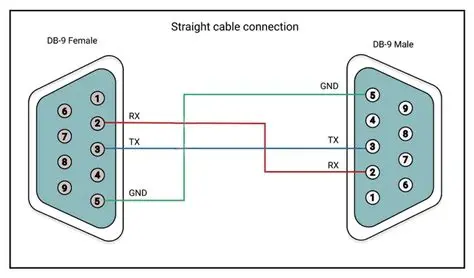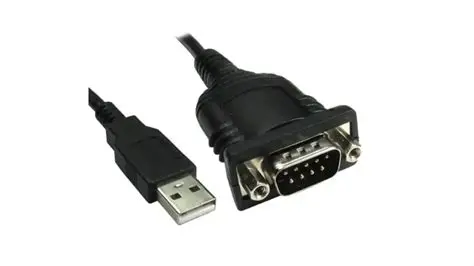

What is the difference between USB and RS-232?
USB (Universal Serial Bus) and RS-232 (Recommended Standard 232) are two popular communication interfaces that are commonly used in field of computer hardware and electronics. While they serve similar purposes of transmitting data between devices, they have distinct differences that set them apart from each other.

Firstly, USB is a universal standard that was developed in mid-1990s to simplify connection of peripherals to computers. It is a hot-swappable interface, meaning that devices can be connected and disconnected while system is running without needing to restart computer. USB cables typically have a flat, rectangular connector that plugs into a port on computer, making them easy to identify and use. USB ports also provide power to connected devices, eliminating need for a separate power source.
On other hand, RS-232 is an older serial communication standard that has been around since 1960s. It uses a 9-pin connector and is mostly used for connecting legacy devices such as modems, printers, and scanners. RS-232 cables are not hot-swappable, meaning that devices must be connected and disconnected when system is turned off to prevent damage. RS-232 does not provide power to connected devices, so an external power source is often required.
Another key difference between USB and RS-232 is data transfer speeds. USB interfaces are capable of much faster data transfer rates compared to RS-232. USB 2.0, for example, has a maximum transfer rate of 480 Mbps, while RS-232 typically operates at speeds of up to 115 kbps. This makes USB a more efficient choice for transferring large amounts of data quickly.
Furthermore, USB supports multiple devices connected to a single port through use of hubs, allowing users to expand number of peripherals connected to their system. RS-232, on other hand, is a point-to-point communication standard that only supports a single device connected to a single port.
In terms of compatibility, USB has become standard for connecting devices to computers, with virtually all modern computers and peripherals equipped with USB ports. RS-232, on other hand, is becoming increasingly rare as newer technologies have replaced it in most applications.

In conclusion, while USB and RS-232 serve similar purposes of transmitting data between devices, they have distinct differences in terms of data transfer speeds, power supply, compatibility, and ease of use. USB is more modern and versatile interface, offering faster data transfer rates and greater compatibility with a wide range of devices. RS-232, meanwhile, is an older interface that is mostly used for connecting legacy devices that do not support USB. Ultimately, choice between USB and RS-232 will depend on the specific requirements of the devices being connected and the level of compatibility needed.








Leave a Reply